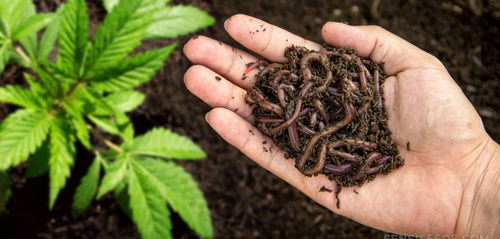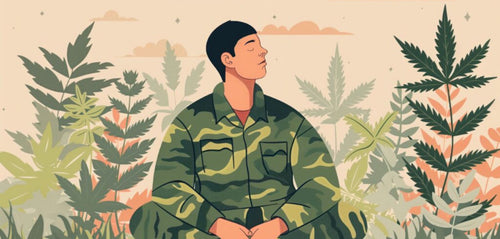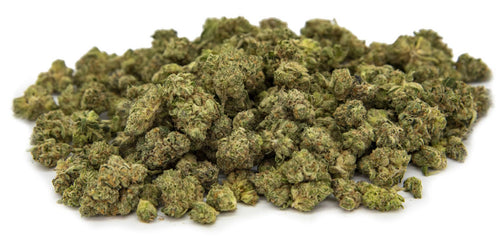#97: Jazz and Cannabis: A Love Affair Through the Ages
#97: Jazz and Cannabis: A Love Affair Through the Ages
"I see trees of green, red roses too" - the iconic opening line of Louis Armstrong's "What a Wonderful World" is instantly recognizable and ingrained in our cultural consciousness. But what many may not know is that Armstrong, along with many other jazz legends, had a deep and longstanding relationship with cannabis. In fact, the history of jazz and cannabis are closely intertwined, with many musicians using it as a source of inspiration and creativity.
From the early days of jazz in New Orleans, to the vibrant jazz scenes of Montreal and Harlem, cannabis was a common thread connecting many musicians and influencing their music. One could say that without cannabis, jazz may not have developed into the dynamic and boundary-pushing genre that it is today.
Why was cannabis so prevalent in jazz circles? And how did it shape the music and culture of the genre? Whether you're a jazz lover, a cannabis enthusiast, or simply interested in the history of music and counterculture, this is a fascinating topic to explore.
How cannabis lit up the jazz scene
The history of jazz can be traced to New Orleans in the late 19th/early 20th century, where African American musicians blended elements of ragtime, blues, work songs, and gospel music to create a new and distinctly American sound.

What made jazz so unique was its improvisational and collaborative nature. Musicians would often come together to jam at Congo Square in New Orleans, a gathering place for African Americans to freely express themselves through music and dance. And it was in these jam sessions that cannabis began to play a role.
As jazz spread to other cities like Chicago and New York City, cannabis continued to be a common ingredient in the genre's culture. In the 1930s, jazz clubs in Harlem became hotspots for cannabis use and experimentation. In these smoky and lively venues, "vipers" (slang for musicians who smoked cannabis) would play and jam together, often referencing cannabis in their lyrics.
However, the relationship between cannabis and jazz was not without its challenges. In the 1930s, as part of the war on drugs, cannabis was demonized and criminalized by the US government. Jazz musicians, many of whom were African American, were heavily targeted by law enforcement and faced harsh consequences for cannabis possession.
Despite these challenges, the relationship between jazz and cannabis persevered. In the 1950s and 1960s, jazz musicians like Thelonious Monk and Miles Davis continued to incorporate cannabis into their music and lifestyles. And with the rise of counterculture movements in the 1960s, cannabis became even more intertwined with music genres like jazz, rock, and folk.
How cannabis shaped jazz improvisation

Cannabis played a significant role in the creation and evolution of jazz, not just as a recreational substance but also as an aid to musicians. A key element in jazz music is improvisation, where musicians create and play on the spot, often inspired by their surroundings and emotions. The "time-slowing" effect allowed artists to experiment more freely with improvised riffs during jam sessions.
Cannabis has been known to enhance creativity and lower inhibitions, making it a useful tool for jazz musicians seeking to let go of self-consciousness and tap into their musical instincts. It was seen as a muse that fueled improvisation and unlocked boundless creativity. The mind-altering effects of cannabis helped musicians tap into new depths of expression and connection with their music.
Furthermore, cannabis was seen as a way to break free from societal norms and restrictions, allowing jazz musicians to fully express themselves through their music. This rebellious attitude towards traditional values can be seen in the lyrics and sounds of many jazz songs that reference cannabis.
When you look at the complex rhythms and improvisational nature of jazz music, it's no surprise that cannabis and jazz were so intertwined. Its ability to stimulate the senses and enhance creativity made it a natural pairing with jazz, a genre that is still pushing boundaries and breaking away from the norm.
The legendary musicians who lit up
Many notable jazz musicians have openly and proudly incorporated cannabis into their creative processes and lifestyles. Here's a closer look at some of these influential figures and their relationship with cannabis:
Louis Armstrong: One of the most influential figures in jazz who was an open and unapologetic cannabis user. His song "Muggles" was a thinly veiled tribute to cannabis.
"We always looked at pot as a sort of medicine, a cheap drunk and with much better thoughts than one that's full of liquor" Louis Armstrong

Charlie Parker: An influential saxophonist and composer who was known for his fast-paced, improvisational style. Parker's use of cannabis was often attributed to his unique musical approach.
Billie Holiday: Known as "Lady Day," Holiday was a fearless jazz singer who used cannabis as a creative muse and later on, for pain management.
Dizzy Gillespie: A key figure in bebop development, Gillespie was a known cannabis user who made references to the "gage" (slang for cannabis) in his music.
Jelly Roll Morton: Pianist, composer, and bandleader, Morton believed that cannabis enhanced his creativity and performance.
Duke Ellington: This legendary bandleader and composer was known to enjoy cannabis, even writing a song called "Chant of the Weed" in 1931.
John Coltrane: Known for his lush tone and complex improvisations, Coltrane used cannabis to tap into deeper levels of consciousness and explore different musical ideas.
Cab Calloway: "Reefer Man" is one of Calloway's most famous songs, referencing cannabis in a playful and humorous way.
Mezz Mezzrow: Clarinetist, saxophonist, and the Louis Armstrong's weed dealer, Mezzrow was a prominent figure in the cannabis culture of the jazz world.
Mary Lou Williams: Celebrated woman jazz musician and habitual cannabis smoker, Williams wrote about the "Land of Oo-Bla-Dee" in one of her songs as a reference to cannabis.
Creativity, improvisation, and risk-taking have always been key components of jazz music. And for many jazz musicians, cannabis was a tool that helped them tap into their musical genius and push boundaries. While some may view cannabis as a hindrance or distraction, for these jazz artists, it was a source of inspiration and freedom.
Cannabis and jazz: A timeless duet
"I don't intend to ever stop smoking it, not as long as it grows," said jazz legend Louis Armstrong about cannabis. And he was from from alone in his sentiment. Throughout the history of jazz, cannabis has been intertwined with the music and culture. From enhancing creativity to providing a sense of community, cannabis has played a significant role in the lives of many jazz musicians.
Jazz served as a symbol for rebellion and counterculture, making it not just about music, but also about social and cultural movements. For this reason, it's not surprising that cannabis, with its own rebellious and countercultural connotations, go hand in hand with jazz. So let the music play on, and let cannabis continue to inspire and influence jazz for generations to come.
Back to all posts









